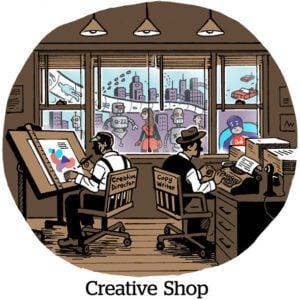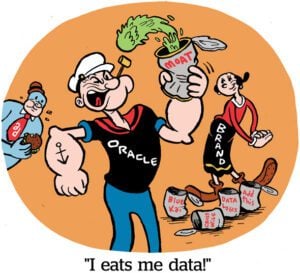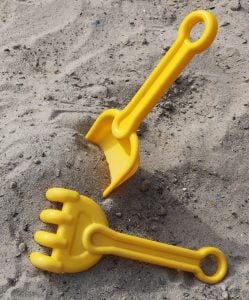The advertising and ecommerce market had a soft Q3 and October. But Integral Ad Science (IAS) had a healthy Q3. And shares jumped by about 5% after earnings.
The company, which reported its Q3 earnings on Thursday, saw revenue increase 19% from a year ago, totaling $120.3 million. Buoyed by the results, IAS upped its full-year revenue outlook to between $470 million and $472 million.
Optimization revenue (formerly programmatic revenue) grew 21% from $47.1 million to $57 million, driven in part by double-digit growth in IAS’ AI-based contextual analysis tool, Context Control.
“Programmatic spend tends to be more variable than other forms of digital media,” said IAS CFO Tania Secor. Still, IAS is hiring programmatic specialists so it can keep adding new product capabilities.
Measurement revenue rose from $39 million to $47.8 million, much of which came from social media. Social media revenues climbed 41% YOY (though IAS doesn’t disclose the revenue figures) and represents 20% of IAS’s total Q3 revenue, compared to 18% in Q2. Social growth also bolstered video revenue, which leapt 40% in Q3 and made up 54% of Q3 measurement revenue, compared to 50% in Q2.
Together, optimization and measurement revenue rose 22% YOY and comprised 87% of IAS’ Q3 revenue.
The remaining 13% came from publisher revenue, which was flat year over year. More than half of that publisher revenue came from the CTV ad server Publica, which IAS acquired in 2021.
“We continue to expect and plan for double-digit growth in 2024,” Secor said.
Let’s get social
Brands are eager to advertise on social platforms because that’s where the users are, said CEO Lisa Utzschneider. She noted that Reels have driven a more than 40% increase in time spent on Instagram, per Meta’s latest earnings call. Google’s YouTube Shorts average more than 70 billion daily views, and more than 2 billion signed-in users watch Shorts each month.
But though brands want to cash in on the popularity of short-form video, user-generated content is “highly dynamic, highly unpredictable,” Utzschneider said. Brands crave reassurance that their ads will run “adjacent to brand-safe and brand-suitable content.”
Geopolitical tensions only drive more demand to IAS’ brand safety and suitability tools. Russia’s invasion of Ukraine resulted in more advertiser interest in Context Control, and the same may be the case for the Israel-Hamas conflict.
IAS now measures media quality on TikTok in 50 markets, up from 30 in Q2 and exceeding its previous goal of 40 markets by year’s end.
And IAS will start client testing brand suitability verification for both Facebook and Instagram feeds and Reels in Q4. Meta is IAS’ largest social platform, Utzschneider said.
“We frame the social media opportunity in terms of big building blocks, which are the live feeds, and the medium building blocks of short-form video,” Utzschneider said. The big building blocks include Meta, YouTube, TikTok and, “to a lesser extent, X,” which IAS partnered with to provide it with prebid brand safety and suitability. The medium building blocks include Meta Reels and YouTube Shorts.
In for a penny, in for a pound
Aside from social media, IAS is eyeing trendy investments in CTV, retail media and AI.
“We’ve consistently said that CTV is a long game,” Utzschneider said. Though CTV is a $25 billion market in 2023, larger media companies and TV manufacturers have longer sales cycles and may take time to bear fruit.
Utzschneider cited a partnership from Q3 with Vizio, the renewal of an exclusive partnership with Samsung, plus Publica’s integration with the Yahoo Backstage DSP as key CTV moves.
IAS is in hot pursuit of retail media, too. To wit, in the third quarter, it inked viewability and invalid traffic measurement partnerships with Instacart Ads and Criteo’s commerce media platform. It also added Context Control prebid segments to Amazon Ads, augmenting the prebid segments available through its integration with Amazon’s DSP.
And the company’s efforts are paying off. Retail media network revenue has soared “nearly 150%” YOY, Utzschneider said, though she didn’t provide the baseline.
As for AI and machine learning, Utzschneider said those developments are core to the company, and they will be built further into its site and traffic detection products.














